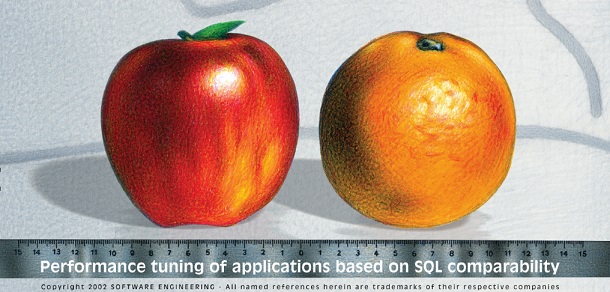This month, I want to go through some of the absolutely most important ZPARMs that control how your Db2 systems behave in a very significant manner. All of the following ZPARMs have a performance impact of some sort. We are always trying to squeeze the last drop of performance out of our Db2 sub-systems, aren’t we?
Db2 13 and Some Db2 12 Updates Ahead!
Since this Newsletter topic first came out, in March 2022, out of the ten ZPARMs listed *five* have got new defaults! I have highlighted all these changed defaults. I have also added three new „Usual Suspects“ to the list of ZPARMs that must be checked…
Starting with the Easy Stuff…
CACHEDYN. YES/NO, default YES. Should always be set to YES – unless you do not care about saving dynamic SQL performance. Back a few decades ago, the recommendation was to have this set to NO as default! Hard to believe that these days, where most shops have 80% – 90% dynamic SQL during the day!
Now we Get to the Numerics!
OUTBUFF. 400 – 400,000, default 102,400. This is *extremely* important and you really should set it to the highest possible value you can afford in real memory! As a minimum, it should be 102,400 KB (100MB). This is the buffer that Db2 uses to write log records before they are „really“ written to disk. The larger the buffer, the greater the chance that, in case of a ROLLBACK, the data required is in the buffer and not on disk.
Skeletons in the Closet?
EDM_SKELETON_POOL. 5,120 – 4,194,304, default 81,920. This is one of my personal favorites, (I wrote a newsletter solely on this a few years ago). I personally recommend at least 150,000 KB and actually even more if you can back it with real memory. Just like OUTBUFF, pour your memory in here but keep an eye on paging! If Db2 starts to page, you are in serious trouble! Raising this can really help with keeping your DSC in control.
DBDs are Getting Bigger…
EDMDBDC. 5,000 – 4,194,304, default 40,960. The DBD Cache is getting more and more important as, due to UTS usage, the size of DBDs is increasing all the time.
DSC is Always Too Small!
EDMSTMTC. 5,000 – 4,194,304, default 113,386. The EDM Statement Cache (really the Dynamic Statement Cache) is where Db2 keeps a copy of the prepared statements that have been executed. So when the exact same SQL statement with the exact same set of flags and qualifiers is executed, Db2 can avoid the full prepare and just re-execute the statement. This is basically a no-brainer and should be set to at least 122,880 KB. Even up to 2TB is perfectly OK. Remember: A read from here is *much* faster than a full prepare, so you get a very quick ROI and great value for the memory invested! Keep raising the value until your flushing rates for DSC drop down to just 100’s per hour, if you can! Remember to cross check with the EDM_SKELETON_POOL ZPARM as well. It always takes two to Tango…
How Many SQLs?
MAXKEEPD. 0 – 204,800, default 5,000. The Max Kept Dyn Stmts parameter is how many prepared SQLs to keep past commit or rollback. It should be set to a minimum of 8,000 or so. Raising this might well cause a large memory demand in the ssidDBM1 address space so care must be taken.
RIDs Keep Getting Longer…
MAXRBLK. 0, 128 – 2,000,000, default 1,000,000. RID POOL SIZE is the maximum amount of memory to be available for RID Block entries. It should be at least 1,000,000 and, if you can, push it to the maximum of 2,000,000. Unless you want to switch off all RID Block access plans, in which case you set it to zero – Obviously not really recommended!
Sorts Always Need More Space
MAXSORT_IN_MEMORY. 1000 to SRTPOOL. Default 2000. The maximum in-memory sort size is the largest available space to complete ORDER BY, GROUP BY or both SQL Clauses. Remember that this is per thread, so you must have enough memory for lots of these in parallel. The number should be between 1,000 and 2,000, but whatever value you choose, it must be less than or equal to the SRTPOOL size.
Sparse or Pair-wise Access?
MXDTCACH. 0 – 512, default 20. Max data caching is the maximum size of the sparse index or pair-wise join data cache in megabytes. If you do not use sparse index, pair-wise join, or you are not a data warehouse shop, then you can leave this at its default. Otherwise, set it to be 41 MB or higher. If it is a data warehouse subsystem, then you could set this as high as 512 MB. (This ZPARM replaced the short-lived SJMXPOOL, by the way.)
Sort Node Expansion
SRTPOOL. 240 – 128,000, default 20,000. SORT POOL SIZE is the available memory that is needed for the sort pool. IFCID 96 can really help you size this parameter. Remember that the number of sort nodes leapt up from 32,000 in Db2 11 to 512,000 nodes for non-parallelism sorts and 128,000 nodes for a sort within a parallel child task in Db2 12. This means raising this ZPARM can have an even greater positive effect than before.
The Three New Guys on the Block!
To the MAX!
DSMAX used to be around 20,000 and can now be between 1 – 400,000. Remember that you will never actually reach this maximum limit as it is 31-bit memory-constrained.
Thrashing Around…
NPGTHRSH. Valid values are 0 or 1 – 2147483647. Default up to Db2 11 was 0, from Db2 12 default is now 1. SAP systems use a default of 10. The big change here, was in Db2 12 when the change from „no statistics ever ran“ of -1 forced the value to be the „optimizer default“ of 501 instead of the real value -1. This is also why the default is now 1 ,so that this ZPARM has a normal use! Setting it to 0 means that the access path chosen will always only be cost based.
Lock ‚em Up and Throw Away the Key!
NUMLKUS. 0 – 104857600, with a default of 20,000. Just be careful raising this value too high, as each lock will take 540 bytes of storage in the IRLM!
Your „Top Ten List“ + Three
These thirteen ZPARMs really influence how your Db2 system works and so must always be checked and changed with great care and attention to detail. Always do a before and after appraisal to see whether or not changing them helped or hindered your system!
If you have any comments, or other ZPARMs you think are also important for performance, feel free to drop me a line!
IDUG 2023 NAIDUG is nearly upon again. I will be there in Philadelphia at the SEGUS booth and doing a fair bit of moderating as well. Drop on by, have a chat and pick up some of our swag and join me at the „Roy reviews AI with our WorkloadExpert“ PSP on Thursday for a chance to win some cool stuff.
Hope to see some of you there!
TTFN,
Roy Boxwell





